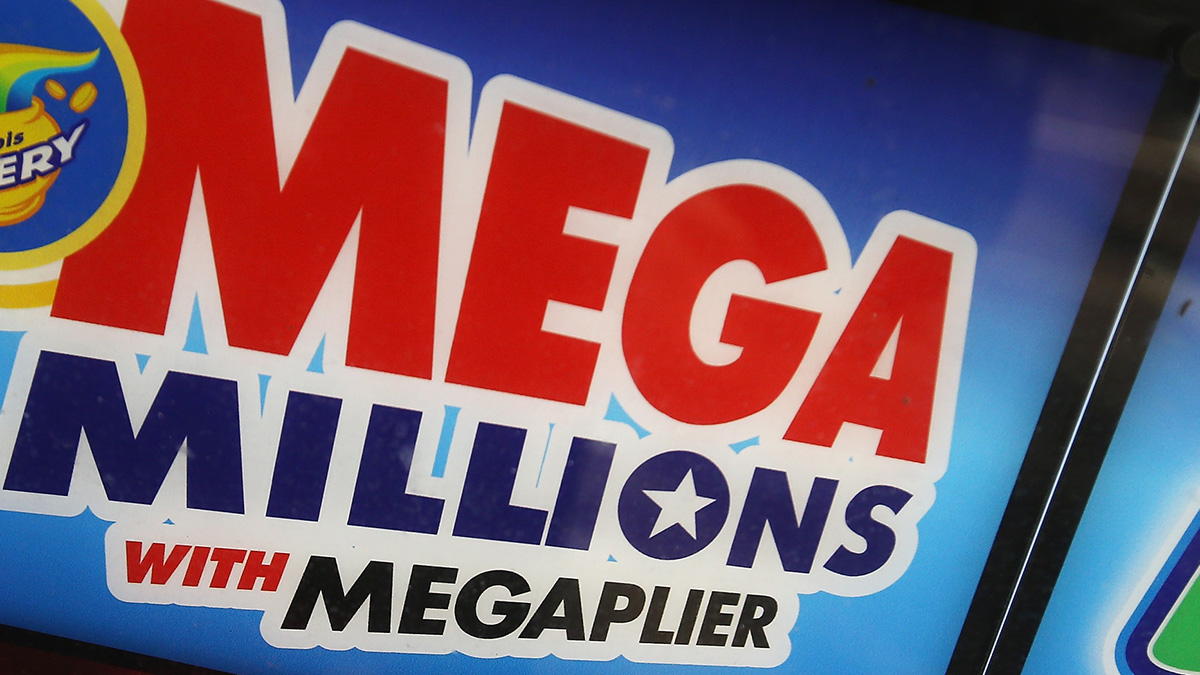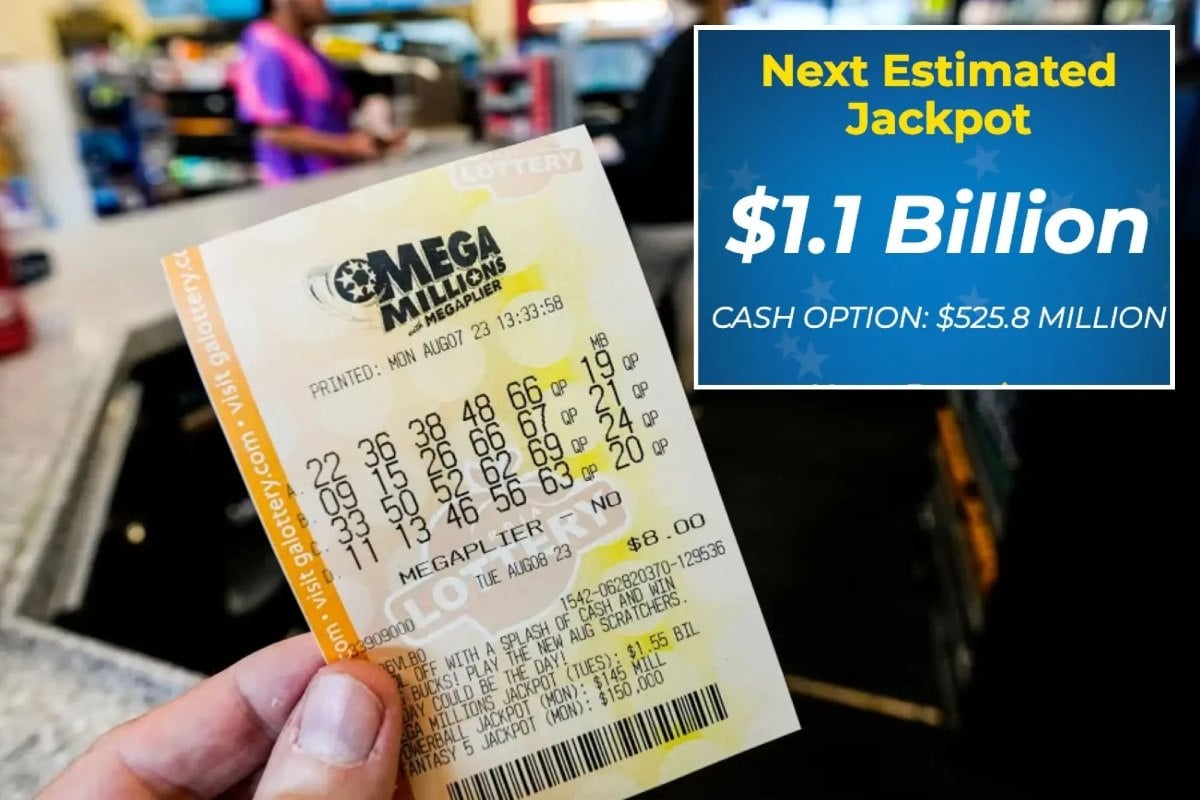The Allure of the Mega Millions Jackpot: Mega Millions Jackpot Swells To 5M. However, You Might Have

The Mega Millions jackpot has soared to a staggering $825 million, igniting a frenzy of lottery ticket purchases across the nation. This astronomical sum triggers a potent cocktail of psychological factors, prompting even the most statistically-minded individuals to dream of sudden, unimaginable wealth. The sheer magnitude of the prize overshadows the minuscule odds of winning, creating a captivating illusion of possibility.
The perceived value of $825 million is vastly different from its actual probability. While the raw number conjures images of financial freedom, exotic vacations, and philanthropic endeavors, the mathematical reality is starkly contrasting. The probability of winning the Mega Millions jackpot is exceptionally low, making the perceived value a product of hope, fantasy, and the power of suggestion rather than a rational assessment of risk versus reward. This disconnect between perceived and actual value is a key driver behind the lottery’s enduring appeal.
The Influence of Media Coverage on Lottery Sales, Mega Millions jackpot swells to 5M. However, you might have
Media coverage plays a crucial role in amplifying the allure of the Mega Millions jackpot. News reports, social media discussions, and even casual conversations all contribute to a heightened sense of excitement and anticipation. The constant reminders of the growing jackpot, coupled with stories of past winners and their transformative experiences, create a contagious enthusiasm that encourages participation. This media-driven hype significantly boosts ticket sales, as the sheer volume of publicity increases the perceived likelihood of winning, regardless of the actual odds. The more the media emphasizes the jackpot size, the more people are drawn in, creating a self-fulfilling prophecy of increased sales.
Comparative Probabilities of Winning the Mega Millions Lottery
The following table illustrates the relative chances of winning the Mega Millions lottery compared to other highly improbable events. Understanding these probabilities helps to put the lottery’s odds in perspective.
| Event | Approximate Odds | Mega Millions Odds | Relative Likelihood |
|---|---|---|---|
| Being struck by lightning in a year | 1 in 1,530,000 | 1 in 302,575,350 | Mega Millions is significantly less likely |
| Winning a major national lottery (e.g., Powerball) | Varies by lottery; generally very low | 1 in 302,575,350 | Comparable low likelihood, but different lottery |
| Being involved in a fatal car accident | 1 in 107 (lifetime) | 1 in 302,575,350 | Mega Millions is far less likely |
| Dying from a shark attack | 1 in 3,748,067 | 1 in 302,575,350 | Mega Millions is substantially less likely |
Financial Implications of Winning
Suddenly finding yourself $825 million richer is a life-altering event, but it’s crucial to remember that the financial implications extend far beyond the sheer joy of winning. Navigating the complexities of taxes, investments, and personal management is paramount to ensuring your newfound wealth translates into long-term security and happiness, rather than stress and regret.
Tax Implications of an $825 Million Win
Winning the Mega Millions jackpot triggers significant tax liabilities at both the federal and state levels. The federal government will take a substantial cut, currently at a top rate of 37%. Beyond this, state taxes vary considerably. For example, California has no state income tax, while New York has a high top rate, meaning a winner in New York would face significantly higher state taxes than a winner in California. It’s essential to immediately consult with experienced tax professionals who specialize in high-net-worth individuals. They can help you strategize to minimize your tax burden legally and efficiently, perhaps utilizing deductions and credits to reduce your overall liability. Failing to adequately plan for taxes can severely diminish your winnings, leaving you with far less than the advertised jackpot. Accurate estimations require specific state residency and professional tax advice.
Responsible Financial Management Strategies
The influx of such a massive sum requires a meticulously planned approach to avoid impulsive spending and financial mismanagement. A crucial first step is assembling a highly skilled financial team. This team should include a tax attorney, a financial advisor, an estate attorney, and potentially a certified public accountant (CPA). This team will work collaboratively to develop a comprehensive financial plan tailored to your specific needs and goals. This plan should cover various aspects, including investment diversification (spreading your assets across different asset classes to minimize risk), long-term investment strategies (planning for retirement and future generations), and charitable giving. Examples of responsible strategies include creating a budget, setting financial goals (both short-term and long-term), and avoiding high-risk investments without professional guidance.
Potential Downsides of Winning a Large Sum of Money
While winning the lottery seems idyllic, the reality can be far more complex. The sudden influx of wealth can strain relationships with family and friends. Existing relationships may be tested as people seek financial assistance or become envious. New relationships may also be challenging to navigate, as it’s difficult to discern genuine connection from opportunistic motives. Furthermore, personal safety becomes a significant concern. Increased visibility can attract unwanted attention, including potential threats and scams. It’s vital to maintain a low profile, avoid public displays of wealth, and prioritize personal security. Hiring a security detail might be a necessary precaution. The psychological impact should also not be underestimated. The sudden shift in lifestyle can be overwhelming, potentially leading to stress, anxiety, and depression. Seeking professional guidance from a therapist or counselor can help manage these challenges.
Hypothetical Financial Plan for a Mega Millions Winner
Let’s imagine a hypothetical winner. After taxes (let’s assume a post-tax amount of approximately $500 million), a prudent approach would involve several steps. First, a significant portion should be allocated to secure, low-risk investments such as government bonds and high-yield savings accounts. This provides a safety net and a foundation for future growth. A portion should be invested in a diversified portfolio of stocks, real estate, and potentially alternative investments like private equity, guided by professional financial advisors. A considerable amount should be set aside for charitable giving, supporting causes close to the winner’s heart. Finally, provisions should be made for estate planning, ensuring a smooth transfer of wealth to heirs and minimizing potential estate taxes. This would involve creating trusts and wills, and potentially setting up charitable trusts for long-term philanthropic endeavors. The specific allocation will depend on individual risk tolerance and long-term goals.
The Odds and Probabilities

So, you’re dreaming of that $825 million Mega Millions jackpot? Before you start planning your lavish lifestyle, let’s get real about the odds. Winning the lottery is a thrilling prospect, but understanding the probabilities is crucial to making informed decisions about your participation. This section will delve into the mathematical realities of winning the Mega Millions and help you assess the risks involved.
The probability of winning the Mega Millions jackpot is incredibly slim. To win, you need to match all six numbers drawn: five numbers from a pool of 70, and one Mega Ball from a pool of 25. This seemingly simple task translates into a staggeringly low probability.
Mega Millions Probability Calculation
The probability of winning the Mega Millions jackpot is calculated by multiplying the probabilities of selecting each number correctly. First, we calculate the probability of correctly selecting the five main numbers. This involves using combinations, specifically the formula for combinations (nCr), where n is the total number of items and r is the number of items chosen. In our case, it’s 70C5, which is calculated as 70! / (5! * (70-5)!). This gives us 12,103,014 possible combinations of the five main numbers. Then, we multiply this by the probability of correctly selecting the Mega Ball, which is 1/25. Therefore, the total probability of winning the Mega Millions jackpot is (1/12,103,014) * (1/25) = 1/302,575,350. This means there’s approximately one chance in 302.6 million of winning the jackpot.
Expected Value of a Lottery Ticket
The expected value (EV) of a lottery ticket is a statistical concept that represents the average amount you can expect to win or lose per ticket purchased. It’s calculated by multiplying the probability of each outcome by its corresponding payout, then summing these values. In the Mega Millions, the expected value is typically negative, meaning that on average, you’ll lose money by buying tickets. This is because the jackpot prize is significantly smaller than the total amount spent on tickets, considering the incredibly low probability of winning. For example, if a ticket costs $2 and the expected value is -$1.50, this indicates that on average, you’d lose $1.50 for every ticket purchased.
Mega Millions Odds Compared to Other Gambling
Compared to other forms of gambling, the Mega Millions jackpot offers significantly worse odds. Slot machines, for example, often have probabilities of winning a smaller prize in the range of 1 in 10 to 1 in 100. While the jackpot prize in Mega Millions is significantly larger, the probability of achieving this outcome is drastically lower than winning smaller prizes in most casino games. Even games like poker or blackjack, while involving skill and strategy, have more favorable odds than winning the Mega Millions lottery.
Mega Millions Lottery Number Drawing Process and Probability
The Mega Millions lottery numbers are drawn using two separate machines. One machine draws five numbered balls from a set of 70 balls, numbered 1 to 70. The other machine draws one Mega Ball from a set of 25 balls, numbered 1 to 25. Each ball is selected randomly and independently. The probability of each ball being selected is equal for all balls in its respective set. The overall probability of winning the jackpot is determined by multiplying the probabilities of correctly selecting the five main numbers and the Mega Ball, as detailed in the “Mega Millions Probability Calculation” section above. The process ensures fairness and randomness in the selection of winning numbers.